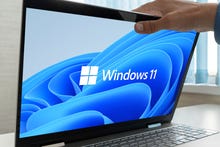In less than four years, Microsoft will draw the final curtain on Windows 10 after a 10-year run.
That news shouldn't come as a surprise to anyone. The end date is defined as part of Microsoft's Modern Lifecycle Policy, and it's documented on the Microsoft Lifecycle page: "Microsoft will continue to support at least one Windows 10 Semi-Annual Channel until October 14, 2025."
When a Windows version reaches its end-of-support date, the software keeps working, but the update channel grinds to a halt:
[There] will be no new security updates, non-security updates, or assisted support. Customers are encouraged to migrate to the latest version of the product or service. Paid programs may be available for applicable products.
Ho-hum stuff, right? I mean, this sort of thing has happened before, and the world didn't come to an end. Windows XP got a multi-year support extension before it was allowed to die with dignity at the ripe old age of 13.
Likewise, Windows 7 hit end-of-support at the start of 2020, mostly without incident. Microsoft's customers grumbled but found upgrade paths. Microsoft even offered free app remediation services for enterprise customers who encountered compatibility issues.
But in both of those instances, Microsoft could implore its customers to fix the problem by upgrading to a newer version of the Windows operating system.
Read that part again: "Customers are encouraged to migrate to the latest version of the product or service." That's not an option for customers running Windows 10 on hardware that doesn't meet the stringent hardware compatibility requirements of Windows 11. When October 2025 rolls around, those devices will have no Microsoft-supported migration path to a newer version. The owners of those perfectly functional PCs, some less than five years old, will instead have the following options:
- Continue running the unsupported operating system and hope for the best
- Retire or dispose of the unsupported hardware
- Install a non-Microsoft operating system, such as Linux
- Ignore Microsoft's warnings and upgrade to Windows 11 anyway
Option 1 is unwise. Option 2 is unconscionable. Option 3 is unlikely.
That leaves only the fourth option, which comes with Microsoft's own supersized portion of Fear, Uncertainty, and Doubt (FUD) in the form of a support bulletin titled "Installing Windows 11 on devices that don't meet minimum system requirements."
That document packs a lot of FUD into just a few paragraphs:
Installing Windows 11 on a device that does not meet Windows 11 minimum system requirements is not recommended. If you choose to install Windows 11 on ineligible hardware, you should be comfortable assuming the risk of running into compatibility issues.
Your device might malfunction due to these compatibility or other issues. Devices that do not meet these system requirements will no longer be guaranteed to receive updates, including but not limited to security updates.
The following disclaimer applies if you install Windows 11 on a device that doesn't meet the minimum system requirements:
This PC doesn't meet the minimum system requirements for running Windows 11 - these requirements help ensure a more reliable and higher quality experience. Installing Windows 11 on this PC is not recommended and may result in compatibility issues. If you proceed with installing Windows 11, your PC will no longer be supported and won't be entitled to receive updates. Damages to your PC due to lack of compatibility aren't covered under the manufacturer warranty.
[emphasis in original]
When Windows 7 reached its end-of-support date in 2020, I calculated that about 200 million PCs were still running that operating system. When Windows 10 hits its end-of-support milestone in 2025, the number of newly unsupported devices is likely to be even larger.
Business customers might be able to pay for extended security updates for Windows 10, although that will be a bitter (and expensive) pill to swallow. But small businesses and consumers won't have that choice.
What are the owners of those PCs supposed to do? Microsoft's bean counters would, of course, like them all to throw those old devices into the nearest landfill and replace them with shiny new hardware, but that's not going to happen. Instead, most of those customers are likely to do absolutely nothing and carry on with their unsupported operating system, endangering the entire PC ecosystem in the process.
This mess is Microsoft's responsibility, and doing nothing to clean it up isn't an acceptable option.
There is an alternative, though: Microsoft could extend the support deadline for Windows 10 on hardware that isn't compatible with Windows 11.
The company did the same thing, under similar circumstances, in the Windows XP era, and it's a perfectly appropriate solution here. The good news is that Microsoft's spinmeisters have three years to come up with a press release that makes it sound like they planned this all along.
Article From & Read More ( Windows 10 is a security disaster waiting to happen. How will Microsoft clean up its mess? - ZDNet )https://ift.tt/3DjcN8l
Technology
Bagikan Berita Ini















0 Response to "Windows 10 is a security disaster waiting to happen. How will Microsoft clean up its mess? - ZDNet"
Posting Komentar